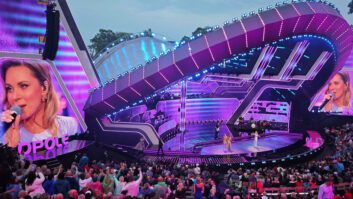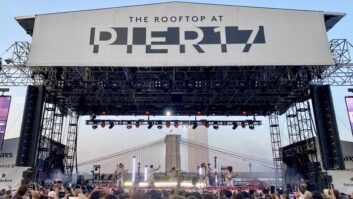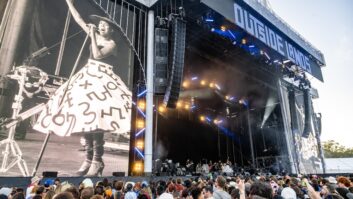
New Orleans, LA (June 3, 2024)—The New Orleans Jazz & Heritage Festival is always a highlight of the city’s musical year, drawing thousands of people to the region to experience two extended weekends of incredible music—but what to do during the intervening two days of downtime? For the last three years, those idle music lovers have headed to the aptly named Daze Between New Orleans festival, and this year’s edition, held on the grounds of Faubourg Brewery, saw acts like Galactic, the Dirty Dozen Brass Band, Cool Cool Cool and headliners Lettuce and Gov’t Mule hit the stage.
Daze Between production manager Sami Slovy noted, “Our genre is mostly jam bands, with some rock, and there are a lot of audiophiles in the fan base,” adding, “They’re looking for it to sound good and clear.” With that in mind, audio was provided by Upscale Productions of Lake Charles, Louisiana, which brought a variety of systems from Meyer Sound, the event’s official sound partner.
Panther large-format linear line array loudspeakers returned to the main Daze Between stage, paired with a 2100-LFC low-frequency control element, while The Jerry Garcia Wellness Stage centered around Leopard compact linear array loudspeakers, supplemented by 700-HP and 900-LFC low-frequency control elements. Both stages sported MJF-210 high-power stage monitors; systems were managed by Galileo Galaxy 816 and 408 processors.
Meyer Sound Talks Sustainability, Engineering
“I really think Panther is an exceptionally beautiful festival box,” remarked Chris Hebert, who mixed FOH for Galactic and The Krasno/Moore Project. “It eliminates amp racks on stage, and now you can have that in a smaller, lighter frame box that can perform the way it does. That’s really a game changer.”
Chris Bargy, FOH engineer for Gov’t Mule, had his hands full mixing not only the band but also an epic lineup of guests, including John Scofield, Chuck Leavell, Ivan Neville, Karl Denson, and The Dirty Dozen Brass Band. “I didn’t get to tune the PA like I usually do,” he recalled afterwards, “but I said, ‘It’s a Panther. I know what it sounds like. Let me listen to the instruments really quick and we’ll be good to go.’ I was able to focus on mixing rather than diagnosing the PA. As front-of-house engineers, it takes a lot off our plate when we don’t have to worry about the system.”







